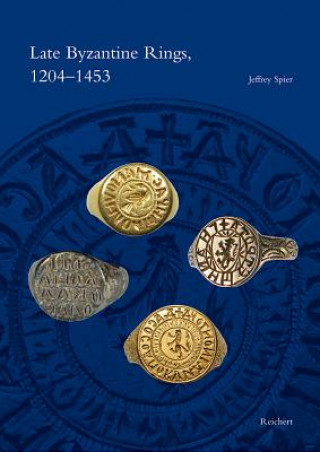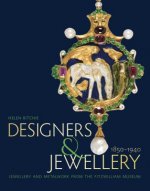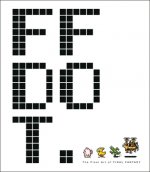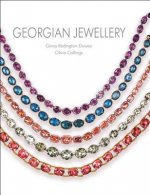
Code: 01907144
Late Byzantine Rings, 1204 - 1453
by Jeffrey Spier
Late Byzantine Rings, 1204-1453 is the first study of the rings of the final years of the Byzantine Empire, the period encompassing the Latin occupation of Constantinople (1204-1261) and the restored empire under the Palaiologan r ... more
- Language:
 English
English - Binding: Hardback
- Number of pages: 112
Publisher: Reichert, 2013
- More about this

88.45 €

Low in stock at our supplier
Shipping in 13 - 16 days
Potřebujete více kusů?Máte-li zájem o více kusů, prověřte, prosím, nejprve dostupnost titulu na naši zákaznické podpoře.
Add to wishlist
You might also like
Give this book as a present today
- Order book and choose Gift Order.
- We will send you book gift voucher at once. You can give it out to anyone.
- Book will be send to donee, nothing more to care about.
More about Late Byzantine Rings, 1204 - 1453
You get 222 loyalty points
 Book synopsis
Book synopsis
Late Byzantine Rings, 1204-1453 is the first study of the rings of the final years of the Byzantine Empire, the period encompassing the Latin occupation of Constantinople (1204-1261) and the restored empire under the Palaiologan rulers until the fall of Byzantium to the Turks in 1453. The rings from this period are remarkable not only for their fine design but also for the variety of inscriptions they bear, including personal names and monograms, official titles, and epigrams composed by Byzantine poets. §The book illustrates and discusses nearly fifty rings from the Palaiologan period, as well as some earlier Byzantine rings, contemporary Byzantine jewelry, and related material from Bulgaria, Serbia, and the West. Many of the rings are published here for the first time. The study begins with a review of the great diversity of rings that existed at the end of the twelfth century, just before the Latin Conquest, and suggests that in view of the occupation of both Constantinople and Thessalonica, the production of rings and jewelry in Byzantine style was disrupted. When the Byzantine workshops in Constantinople resumed after 1261, the rings took new forms, combining tradition Byzantine style with considerable Western influence apparent in the style of engraving and the occasional use of engraved gems.§The material gathered in this study will be of importance to a variety of students of Byzantine and Medieval history, literature, art, and jewelry. The rings preserve a number of previously unrecorded personal names and titles that shed light on relations between the imperial court and the new landowning class that emerged in the late Byzantine period. Find sites and names also demonstrate a great degree of political and economic contact with neighboring Serbia and Bulgaria. Influence from the West (especially Venice) is apparent in the workmanship of the rings and their frequent use of heraldic devices in Western style. Verses engraved on some rings can be identified as works of both traditional and contemporary Byzantine poets. The surviving rings also demonstrate that fine quality jewelry was still being produced in the imperial court in Constantinople in the Palaiologan period.§
 Book details
Book details
Book category Books in English The arts Art forms Non-graphic art forms
88.45 €
- Full title: Late Byzantine Rings, 1204 - 1453
- Author: Jeffrey Spier
- Language:
 English
English - Binding: Hardback
- Number of pages: 112
- EAN: 9783895009402
- ID: 01907144
- Publisher: Reichert
- Weight: 375 g
- Dimensions: 246 × 174 × 12 mm
- Date of publishing: 08. April 2013
Trending among others
-

Final Fantasy Vii Remake: Material Ultimania
34.61 € -14 % -

Castlevania: The Art Of The Animated Series
36.92 € -8 % -

Nier: Automata World Guide Volume 2
37.02 € -8 % -

Gwent: Art Of The Witcher Card Game
34.11 € -12 % -

The Art of Dead Space
30.58 € -13 % -

Final Fantasy Vii Remake: World Preview
21.93 € -15 % -

Art Of Dishonored 2
52.22 € -21 % -

Art Of Super Mario Odyssey
41.85 € -16 % -

Creating Stylized Characters
28.27 € -24 % -

Carving Patterns by Frank C. Russell: from the Stonegate Woodcarving School: Birds, Animals, Fish
15.09 € -6 % -

World Of Cyberpunk 2077
32.80 € -19 % -

Art Of Cuphead
34.21 € -31 % -

Legend Of Zelda, The: Breath Of The Wild - Creating A Champion
38.73 € -22 % -

The Complete Art Of Guild Wars
33.50 € -17 % -

Designers and Jewellery 1850-1940
25.45 € -9 % -

Art Of Star Wars Jedi: Fallen Order
37.53 € -7 % -

Art Of Mass Effect: Andromeda
34.41 € -11 % -

World Of Tom Clancy's The Division
36.42 € -6 % -

Making Silver Jewellery
14.78 € -19 % -

BoJack Horseman: The Art Before the Horse
29.07 € -20 % -

Art Of Doom: Eternal
32.80 € -19 % -

Legend Of Zelda, The: Art & Artifacts
36.52 € -27 % -

Art Of The Last Of Us Part Ii Deluxe Edition
84.42 € -5 % -

Resident Evil 7: Biohazard Document File
31.09 € -

Final Fantasy Vii Poster Collection
22.63 € -12 % -

Complete Guide to Chip Carving
16.09 € -23 % -

Ff Dot: The Pixel Art Of Final Fantasy
27.16 € -

Sculpting the Figure in Clay
26.36 € -20 % -

Graphic Design For Everyone
20.42 € -21 % -

Jewellery Illustration and Design
32.60 € -5 % -

Art Of Assassin's Creed: Valhalla Deluxe Edition
73.96 € -6 % -

Modelling and Sculpting the Human Figure
14.68 € -22 % -

Art Of Days Gone
31.29 € -19 % -

World Of Cyberpunk 2077 Deluxe Edition
91.97 € -7 % -

Apex Legends: Pathfinder's Quest (lore Book)
38.03 € -28 % -

Art Of Halo Infinite
34.31 € -11 % -

Modelling and Sculpting Animals
17.20 € -28 % -

Fontana
15.79 € -14 % -

Looking at Greek and Roman Sculpture in Stone - A Guide to Terms, Styles, and Techniques
23.14 € -10 % -

Sculpture
40.14 € -

Grande Illusions
45.48 € -

Alina Szapocznikow
37.73 € -16 % -

Georgian Jewellery
45.48 € -27 % -

Rodin: Eros and Creativity
30.99 € -

Art Of Overwatch Volume 2 Limited Edition
92.47 € -6 % -

Toiletpaper Magazine 9
13.78 € -19 % -

Final Fantasy XIV Shadowbringers
34.31 € -15 % -

Art of the Japanese Sword
45.88 € -

Advanced Jewellery CAD Modelling in Rhino
28.27 € -19 %
Collection points Bratislava a 2642 dalších
Copyright ©2008-24 najlacnejsie-knihy.sk All rights reservedPrivacyCookies






 15549 collection points
15549 collection points Delivery 2.99 €
Delivery 2.99 € 02/210 210 99 (8-15.30h)
02/210 210 99 (8-15.30h)